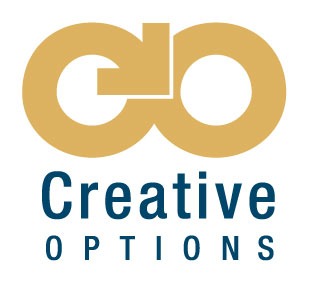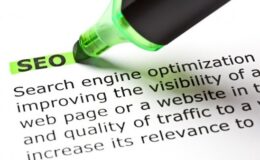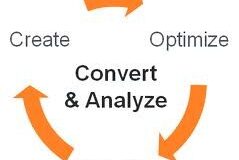If you’re like a number of business owners, you have your ways of getting people to your website. Maybe you have a great search engine optimization company, social media presence, or your store generates a lot of foot traffic that translates into web traffic.
In any case, they come to your website, but they never buy from you through your website. But why? What’s causing a clog in the sales funnel?
Most of the time, poor performing websites are too busy talking about themselves to ask their prospects to do anything, like buy something or contact them, or leave a comment on a blog. It really is that simple.
While this is certainly not all inclusive, here are three basic strategies to improve your website’s conversions and unclog that sales funnel. If you follow these basic principles, you will see an increased conversion rate, and ultimately increased revenue.
Step 1: Make A Good First Impression.
Your website represents who you are and what you offer. When people see it for the first time they’re thinking in this order: Is this site credible? Is it trustworthy? Is this a professional company? Is this company stable? Does this site make me feel welcome? Am I in the right place?
Consumer Web Watch noted, “…the visual design may be the first test of a site’s credibility. If it fails on this criterion, Web users are likely to abandon the site and seek other sources of information and services.”
Yes, research shows website’s design was more important than credibility indicators such having a privacy policy, awards or certifications. Nearly 80% base his or her decision on a company based on the looks of website. So, the lesson: dress to impress. Make a good impression.
While design is important, don’t forget that offering great content is what your visitors are ultimately after. A well-designed website might convince visitors to take a closer look but they won’t look twice if the content isn’t useful and well organized. After all, you never get a second chance to make a first impression. Your website should have:
*Easy Navigation – make sure visitors can get where they need to be easily. Will they understand what page they’re on and what it’s about?
*Optimize Photos – make sure all photos are clear, properly sized and grab attention.
*Make Your Message Clear -Will people know what I do within seconds? Ideally, you want your visitors to know the answers to this question, quickly. It should be readily apparent what your site is about, what they can do there and why they should take action.
Step 2: Effective Call To Action.
Your website needs a compelling and clear “Call to Action.” If you don’t ask a visitor to act (ie call us, purchase online or save) they will never do a thing. A concise Call To Action (CTAs) is the key to lead generation but they need to be done right to convert traffic into leads. Here are some basic best practice ideas on effective CTAs:
*Big and bold – make CTAs stand out more than most other elements on the page, but don’t overdo it.
*Color – Consider colors of the CTA, whether it is a link, button or image. Make them look so good people will want to click on them.
*Provide Value – Offer CTAs that provide value, like guides, whitepapers, estimates, etc. “Contact Us” is the worst form of a CTA. Don’t rely on that as your only option for conversion.
*Make Clickable. You can do this by making a button or adding a hover effect to an element.
So you have Call-to-Actions, but how will people find them? Here are some definitive ideas on what to do with your CTAs:
*Place above the fold. Placing CTAs above the fold is important because that area of a page gets the most views. However, there are still other areas of a page to promote your CTAs. Add some at the bottom of pages and within body content as well. Some studies suggest placing CTAs to the right of the page work better but testing for your site is always recommended.
*Be Clear, Not Clever. Be concise, and add value. No need for fancy, clever headlines. Make the reader sees it with 3 seconds of landing on the home page.
*Test, Analyze And Tweak. Try testing different colors (e.g. red verses green buttons), offers (25% off verses 50% off), language, and placement to see which CTAs get more clicks and drive more leads. Change as needed.
Step 3: Integrate Tracking And Analysis Into Your Website
In real estate we all know, it’s location, location, location. In the online world, it’s test, test, test! One of the great things about online marketing is that everything is measureable. So, take advantage.
Analytics will tell you:
*Compatibility issues – do certain pages have a high bounce rate?
*Where are people abandoning the sales funnel process – for example, are people exiting on popular pages? Are they even visiting your Contact Us page?
*What are your users looking for? Do you offer multiple products or services? Which one of those pages are they visiting the most? Should you focus on those most visit page products.
All this information is valuable and yield insights on how to better interact with the online visitor. A/B Testing is paramount. You need to understand your customers and what they are doing on your site. Better results come from a deep understanding of your customer. Analysis will allow you to:
Identifying Your Blind Spots – points where your visitors are experiencing difficulty.
Take Action – fix problems, track changes and adjust if necessary. Here the 6 basic steps to take:
Measure and Analyze
Get To Know Audience
Identify & Prioritize Issues
Make and Track Changes
Set Up & Run Tests
Repeat Indefinitely
Make decisions based on data, not hunches. Improve website (remove sales barriers). What you can expert from testing and analyzing:
*Decrease cost per acquisition
*Increase Bounce rate
*Increase sales revenue
Conclusion
If visitors are not contacting you or buying from you, it isn’t because they are not interested. They wouldn’t be at your website if they weren’t intending on contacting you making a purchase.
Once they are on your website, it’s up to you to earn that sale. These are the simple basic steps for better conversion. There are obviously deeper and more complicated steps and practices to take that I’d be happy to discuss. But if you take these basic ideas and principles, you will more than likely see a large increase in your web conversion.







